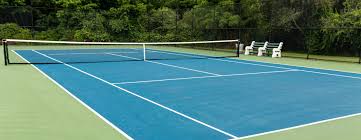Pickleball has quickly become one of the fastest-growing sports across the world. Its popularity comes from being fun, social, and easy to learn for people of all ages. As the game continues to attract enthusiasts, many homeowners are now considering cost of pickleball court construction to enjoy the sport conveniently without leaving their property. One of the most crucial aspects of this project is selecting the right pickleball court floor, which directly affects gameplay, safety, and long-term durability.
Why Build a Pickleball Court at Home?
Having a dedicated court at home offers multiple benefits. It allows you to play anytime you want, encourages an active lifestyle, and increases property value. Families can spend quality time together, while players can practice at their own pace. Unlike driving to a community center or club, a home court ensures privacy and convenience.
Planning the Court Dimensions and Layout
A standard pickleball court measures 20 feet wide by 44 feet long, with additional space needed around the boundaries for safe play. When designing your home court, you should also consider surface leveling, drainage, and lighting if you plan to play at night. Proper planning ensures that the court remains functional and enjoyable in all conditions.
Choosing the Right Flooring Material
The type of flooring you choose plays a vital role in player performance and comfort. Some popular options include:
- Acrylic Surfaces: Widely used for outdoor courts, offering good traction and weather resistance.
- Concrete or Asphalt Base: A cost-effective and durable option, often coated with cushioned layers.
- Modular Tiles: Easy to install and maintain, providing shock absorption to reduce joint strain.
Each option has unique advantages, so selecting the right material depends on your budget, climate, and intended use.
Cost Considerations
The overall cost of building a home pickleball court can vary significantly. Factors like site preparation, surface material, fencing, and accessories all impact pricing. On average, outdoor courts are more affordable, while indoor courts may require advanced flooring systems and specialized lighting. building a home pickleball court Consulting professionals ensures accurate estimates and quality construction.
Safety and Maintenance
A safe and well-maintained court enhances the playing experience. Slip-resistant surfaces, proper drainage, and cushioned flooring reduce injury risks. Regular maintenance, such as cleaning debris and checking for cracks, prolongs the court’s lifespan. For modular tiles, replacing damaged pieces is simple and cost-effective.
Enhancing the Playing Experience
Beyond the court itself, adding accessories such as nets, fencing, windscreens, and seating areas can make the space more functional and enjoyable. You may also consider adding multi-sport lines for basketball or volleyball, turning your investment into a versatile recreational hub.
Conclusion
Investing in a home pickleball court is a rewarding decision for sports enthusiasts and families alike. From proper planning to choosing the right flooring, each step ensures years of enjoyment and health benefits. By carefully considering court size, material, and maintenance, you can create a professional-quality playing area in your own backyard.

